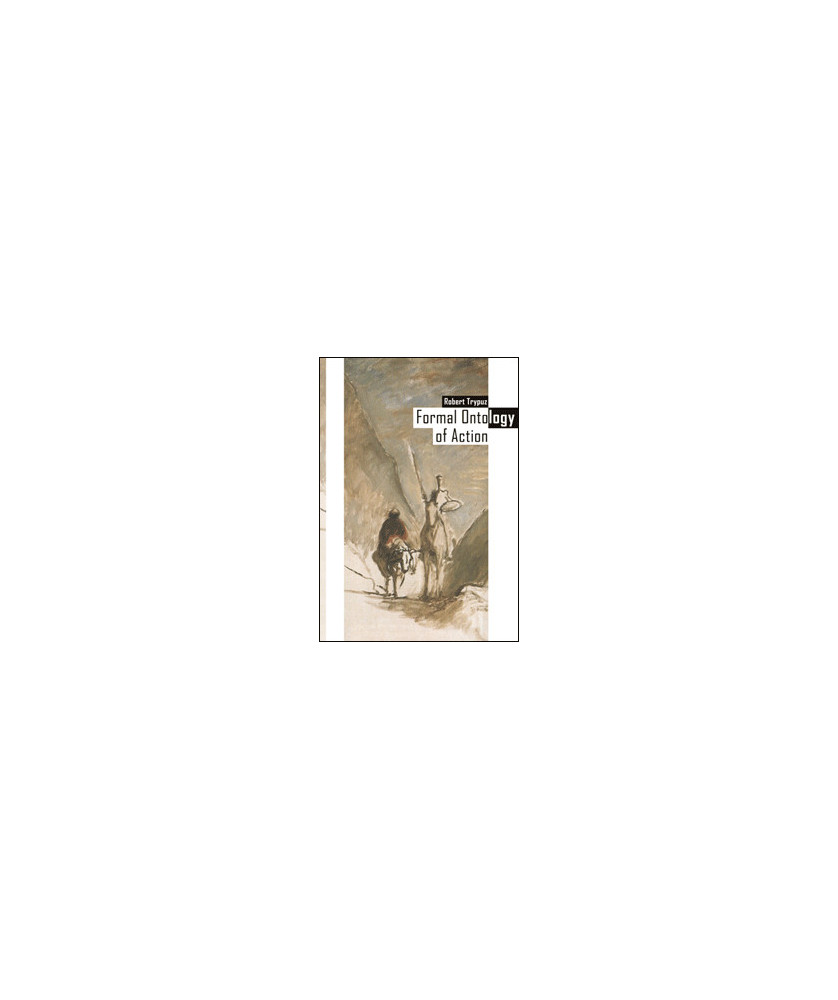


Robert Trypuz
ISBN: 978-83-7363-734-4
Stron: 218
Format: A5
Rok wydania: 2008
Contents
Preface
Abstract
1 Introduction
1.1 Why a formal ontology of action is needed
1.2 Sources of knowledge — interdisciplinary approach
1.3 Methodology and main assumptions
1.4 Structure of the volume
2 Ontologies
2.1 Ontology and ontologies
2.2 What is an ontology?
2.3 What is a formal ontology of action
2.4 Overview of some ontologies
2.5 Final considerations
3 What is an action?
3.1 Agent—an essential component of action
3.1.1 "Agent" in philosophy
3.1.2 Artificial agent
3.2 Philosophy of action
3.2.1 Intentional action
3.2.2 Relational view: no action
3.2.3 Trying in philosophy of action
3.2.4 Control
3.3 Action related works
3.3.1 Dynamic logic and planning
3.3.2 Modal logic of agency
3.4 Final considerations
4 An ontology of agents and choices in branching time
4.1 Introduction to STIT logic and its models
4.1.1 Chellas's STIT
4.1.2 The BT+AC structure—a basis for STIT models
4.1.3 Why Chellas's STIT?
4.2 Towards an ontology of agency
4.3 Ontology of agents and choices in branching time—OntoSTIT
4.4 The relation between Chellas's STIT and OntoSTIT
4.5 How to express agency in OntoSTIT
4.6 Models of OntoSTIT
4.6.1 Completeness
4.6.2 Bundled trees and trees
4.6.3 Soundness
4.7 Final considerations
5 A basic ontology of action
5.1 Agentive and causal gaps
5.2 OntoSTIT+
5.2.1 Language and axiomatization of OntoSTIT+
5.2.2 Understanding the agent's choices
5.2.3 Agency in OntoSTIT+
5.2.4 Filling agentive and causal gaps
5.3 Final Considerations
6 An ontology of action extended with mental attitudes
6.1 Mental attitudes in computer science: the BDI model
6.1.1 Properties of mental attitudes in the BDI model
6.1.2 Intention defined
6.1.3 A logic of intention and attempt (?1A)
6.1.4 Summary
6.2 OntoSTIT+extended with mental attitudes
6.2.1 Three kinds of intention
6.2.2 Properties of mental attitudes in OntoSTIT+
6.2.3 From the beginning to end of the action
6.2.4 OntoSTIT+ in action
6.3 Case study—the Video Game puzzle
6.3.1 The Video Game scenario
6.3.2 OntoSTIT+meets the VG puzzle
6.3.3 CIA meets the VG puzzle
6.3.4 Discussion
6.4 Final considerations
7 An ontology of the aspectual classes of actions
7.1 Semantic properties of the aspectual classes
7.2 Aspectual classes in OntoSTIT+
7.2.1 The framework
7.2.2 Activity
7.2.3 Culminated process
7.2.4 Activity associated with a culminated process
7.2.5 Culmination
7.2.6 State
7.3 Dealing with the Imperfective Paradox
7.4 Mental attitudes and aspectual classes
7.5 Final considerations
8 Towards extending DOLCE with an action
8.1 Action in existing top-ontologies and WordNet
8.1.1 WordNet 3.0
8.1.2 OpenCyc
8.1.3 SUMO
8.2 A short introduction to DOLCE
8.2.1 DOLCE-Lite+
8.3 From OntoSTIT+ to DOLCE
8.3.1 Time
8.3.2 Agents, patients and actions
8.3.3 Aspectual classes
8.3.4 Mental attitudes
8.3.5 Action and bodily movement in DOLCE
8.3.6 Towards further extensions
9 Conclusion
9.1 Summary
9.2 Future work
Bibliography
A Glossary of categories and relations of OntoSTIT+
B DOLCE
B.1 Notation and introductory notes
B.2 Definitions
B.2.1 Mereological Definitions
B.2.2 Quality
B.2.3 Temporal and Spatial Quale
B.2.4 Being present
B.2.5 Inclusion and Coincidence
B.2.6 Perdurant
B.2.7 Participation
B.2.8 Dependence and Spatial Dependence
B.2.9 Constitution
B.3 Characterization of primitive relations
B.3.1 Parthood
B.3.2 Temporary Parthood
B.3.3 Constitution
B.3.4 Participation
B.3.5 Quality
B.3.6 Quale
B.3.7 Dependence and Spatial Dependence
B.3.8 Being Present
B.4 Characterization of Categories
B.4.1 Region
B.4.2 Quality
B.4.3 Perdurant
B.4.4 Endurant
B.5 Glossary of DOLCE's Basic Categories (1)
B.6 Glossary of DOLCE's Basic Categories (2)